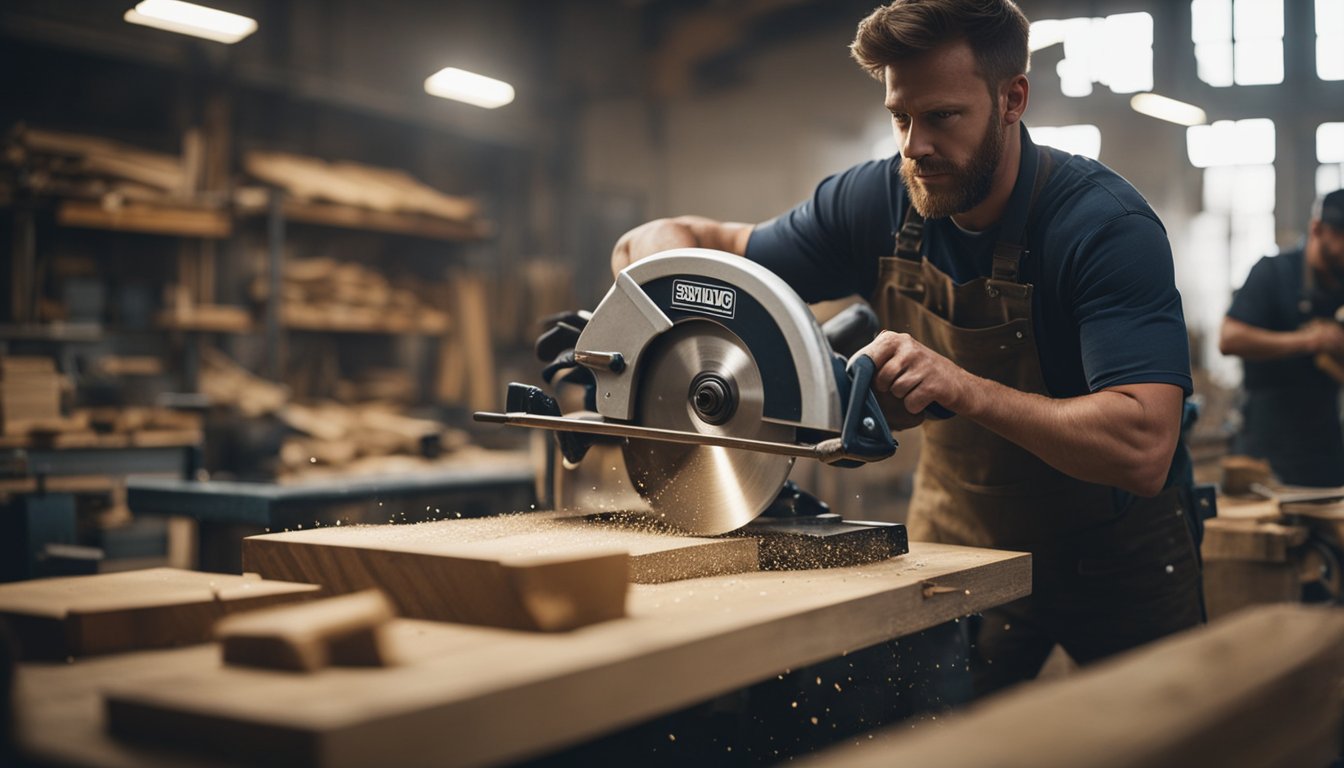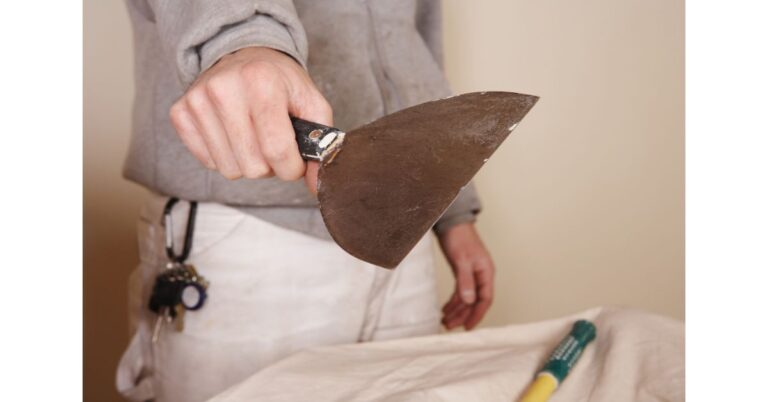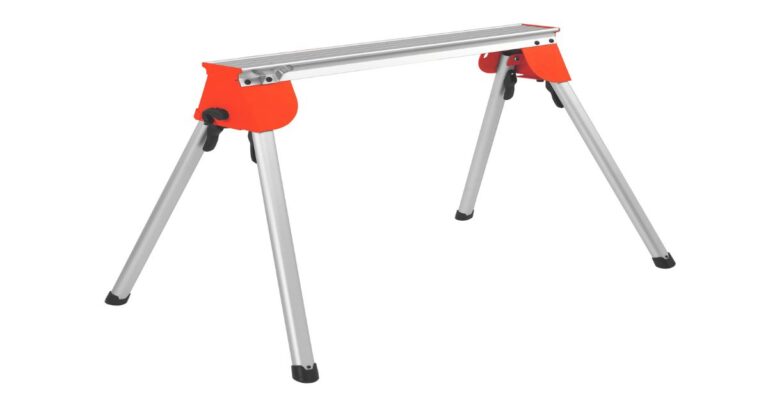The Woodworker’s Guide to Oscillating Tool Speeds: Achieving Smooth, Precise Cuts
Introduction
Introduction Fine woodworking with oscillating multi-tools has become essential for both professional woodworkers and DIY enthusiasts.
The versatility of oscillating tools in woodcraft allows artisans to accomplish a wide range of tasks with precision and efficiency. Whether cutting, sanding, or scraping, an oscillating tool can be a game-changer in the workshop.
This comprehensive guide will explore the various aspects of using an oscillating tool on wood, explicitly adjusting tool speed for smooth and precise cuts. We will delve into variable-speed oscillating tools and their optimal settings for woodworking applications.
Adjusting the tool’s speed is paramount when achieving clean cuts in wood with oscillating tools. Controlling the speed allows artisans to adapt to different types of wood and various cutting techniques.
Artisans can ensure they achieve professional-grade results on their woodworking projects by understanding how to manipulate the speed settings. Furthermore, this guide will also touch upon other important aspects, like sanding wood with an oscillating tool and how to maintain precision during carpentry work.
The article will emphasize safety practices as we acknowledge that working with powerful tools involves inherent risks that need proper attention. Join us as we embark on this journey through the world of woodworking with oscillating tools.
We will unravel techniques, best practices, and expert advice to empower you to take your craftsmanship skills to new heights while ensuring safety and accuracy. Let us dive into this exciting realm where creativity meets functionality and where every cut tells a story of dedication and passion for woodworking excellence.
Basics of Oscillating Tools
Oscillating tools have become indispensable to a woodworker’s toolkit due to their versatility and precision. These handheld power tools are designed to oscillate rapidly, providing a unique cutting motion that allows for smooth and precise cuts in various materials, including wood.
To truly harness these tools’ potential, it is essential to understand the basics behind their functioning. At the core of an oscillating tool lies its motor, which drives the back-and-forth oscillation of the tool head or accessory.
This rapid movement enables the tool to make intricate cuts, sand surfaces evenly, and perform precise tasks that traditional power tools may struggle with. The motor’s power output determines the speed at which the tool operates.
Optimal oscillating tool settings for woodworking depend on two essential factors: speed and amplitude. Speed refers to how quickly the tool head moves back and forth during operation, while amplitude relates to how far it travels during each cycle.
Most oscillating tools allow both settings to be adjusted, allowing woodworkers finer project control. When using an oscillating tool for woodworking, selecting appropriate accessories or blades is crucial, depending on your specific task.
Blades come in various types and tooth configurations designed for different materials and cutting applications. To achieve smooth cuts in wood with an oscillating tool, consider using bi-metal or high-carbon steel blades with fine teeth explicitly designed for woodworking purposes.
Understanding the basics of oscillating tools is essential for any woodworker looking to achieve smooth and precise cuts in their projects. By adjusting speed settings, choosing appropriate blades for woodworking tasks, and following safety practices when operating these versatile tools, you can enhance your craftsmanship and take your woodworking skills to new heights.
Understanding Tool Speed and Its Impact on Wood
Understanding Tool Speed and Its Impact on Wood When using oscillating tools in woodworking, tool speed is a critical factor to consider. The speed at which the oscillating tool operates can significantly impact the quality of your cuts and the overall outcome of your woodworking projects.
Understanding how tool speed affects the wood is crucial for achieving clean and precise cuts. Let’s start by examining the basics.
Oscillating tools are designed with a variable speed feature that allows users to adjust the speed according to their specific needs. This versatility makes them an invaluable asset in any woodworker’s toolkit.
By controlling the oscillations per minute (OPM) or rotations per minute (RPM) of the tool, you can achieve different results on various types of wood. Opting for lower speeds is generally recommended when working with softer woods such as pine or cedar.
Slower speeds allow for better control and reduce the likelihood of causing damage or splintering delicate wood fibers. Conversely, higher speeds are often necessary to cut through denser material more efficiently when dealing with harder woods like oak or maple.
It is important to note that achieving smooth cuts isn’t solely dependent on choosing high or low speeds; it also relies on proper technique and blade selection. Using an oscillating tool with dull blades or employing incorrect cutting techniques can result in rough edges and imprecise cuts regardless of the selected speed setting.
Thus, combining suitable blade options with appropriate tool speeds is paramount for achieving impeccable craftsmanship in woodworking projects. Understanding how tool speed impacts wood when using an oscillating tool is vital for producing clean and precise cuts in your woodworking endeavours.
Adjusting speeds based on wood type and employing proper cutting techniques alongside suitable blades can elevate your woodworking skills and create exceptional pieces that showcase your craftsmanship. Stay tuned as we delve deeper into task-specific speed recommendations later in this article!
Speed Settings for Different Types of Wood
When achieving smooth and precise cuts with an oscillating tool, understanding the appropriate speed settings for different types of wood is crucial. The speed at which the tool oscillates directly affects the quality of the cut, making it imperative to adjust the speed based on the characteristics of the wood being worked on. Woodworkers can ensure optimal performance and avoid any potential damage by considering factors such as hardness, density, and grain orientation.
A lower oscillating tool speed setting is typically recommended for softer woods like pine or cedar. These woods are less dense and more forgiving when working with high-speed tools.
Setting the oscillation speed to around 10,000-15,000 oscillations per minute (OPM) allows for cleaner cuts without causing unnecessary tear-out or splintering of the wood fibers. Additionally, at these lower speeds, control over the tool is enhanced, enabling precise detailing work.
Conversely, hardwoods such as oak or maple require higher speeds due to their denser nature. Higher OPM settings, ranging from 15,000 to 20,000 OPM, are often employed to achieve clean cuts without undue strain on both the tool and user.
However, it’s important to exercise caution when working with harder woods at higher speeds to prevent overheating or burning of the material. Proper technique and periodic breaks during extended use are advisable when operating at these levels.
When dealing with composite materials like plywood or medium-density fiberboard (MDF), balancing power and precision is essential. These materials are more brittle than solid woods and may chip or splinter easily if excessive force is applied.
Adjusting your oscillating tool’s speed between 12,000-18,000 OPM can help mitigate this risk while allowing for efficient cutting in composite materials. Oscillating tools offer significant versatility in woodworking projects due to their ability to adapt speed settings to the specific requirements of different wood types.
By adjusting speed according to the hardness and density of the material, woodworkers can achieve optimal results, ensuring clean cuts and avoiding unnecessary damage. Stay tuned for the following sections, where we will delve deeper into task-specific speed recommendations and techniques for maintaining precision in woodcraft with oscillating tools.
Task-Specific Speed Recommendations
Understanding task-specific speed recommendations is crucial when achieving smooth and precise cuts in woodworking with oscillating tools. Different tasks require varying levels of control and finesse, which can be achieved by adjusting the tool’s speed accordingly.
Let’s explore some critical considerations for task-specific speed recommendations. Lower speeds are best for fine woodworking with oscillating multi-tools, such as detailed carvings or intricate joinery.
This allows for greater precision and control over the tool, ensuring clean and accurate cuts. Adjusting the oscillating tool speed to a lower setting minimizes the risk of accidental errors and reduces the likelihood of damaging delicate wood surfaces.
When cutting through thicker or denser woods, like oak or maple, increasing the speed can help achieve cleaner cuts. The increased oscillation rate allows the blades to penetrate the material more efficiently without causing excessive friction or burning.
However, caution must be exercised when adjusting to higher speeds, as this may compromise precision if not handled with care. Maintaining a moderate speed setting is often recommended for tasks that involve sanding wood with an oscillating tool.
Sanding requires balancing the removal of material efficiently and avoiding overly aggressive abrasion that could damage or distort delicate surfaces. A medium-range oscillation speed ensures effective material removal while enabling woodworkers to maintain control and achieve smooth finishes.
Understanding task-specific speed recommendations is fundamental in maximizing the potential of your oscillating tool in woodworking projects. Fine woodworking calls for slower speeds to ensure precision and avoid mistakes, while cutting through heavier woods may require higher speeds for cleaner results without compromising accuracy.
Maintaining a moderate speed when sanding wood surfaces allows for efficient material removal while preventing surface damage. Adapting your oscillating tool’s speed according to specific tasks can enhance your woodworking skills and achieve exceptional project results.
Achieving Precision and Smoothness
Achieving Precision and Smoothness When it comes to woodworking, precision and smoothness are paramount.
The ability to achieve clean, accurate cuts can elevate the quality of your projects to a whole new level. Thankfully, oscillating tools in woodcraft are versatile, giving you a powerful ally in your quest for precision.
Adjusting the speed of your oscillating tool is crucial for achieving precise cuts. Higher speeds are typically better suited for tasks that require finesse and accuracy.
For example, when making intricate cuts or working on delicate materials like veneer or trim, setting your oscillating tool to a higher speed allows for more control and precision. On the other hand, when tackling heavier cuts or removing material quickly, lower speeds may be preferable.
Another aspect that directly impacts precision is the choice of blades. Different blades have varying tooth patterns, widths, and cutting depths, which can significantly affect the smoothness of your cuts.
For achieving clean and smooth results in woodworking projects, consider using fine-toothed blades that offer greater control over material removal while minimizing tear-out. In addition to speed adjustments and blade selection, understanding oscillating tool techniques specific to carpentry can enhance precision.
For instance, when using an oscillating tool on wood for plunge cutting or detailed shaping work like notches or curves, it’s crucial to maintain a steady hand by applying consistent pressure throughout the cut. This ensures even contact between the blade and the wood surface while minimizing any potential wobbling or chattering that could compromise accuracy.
By paying attention to these factors — adjusting speed settings based on task requirements, choosing appropriate blades for smooth cuts and employing proper techniques — you can maintain precision throughout your woodworking journey with an oscillating tool. These minor adjustments will make a significant difference in achieving clean lines and flawless finishes in DIY projects at home or professional carpentry work.
Remember: practice makes perfect! Take time to familiarize yourself with your oscillating tool’s capabilities and limitations, experiment with different materials and techniques, and soon, you’ll be producing intricate, precise cuts that showcase your craftsmanship.
Safety Considerations at High Speeds
Safety Considerations at High Speeds When working with an oscillating tool at high speeds, it is crucial to prioritize safety to avoid accidents and injuries.
The increased speed amplifies the power and efficiency of the tool, making it essential to adhere to proper safety practices. First and foremost, always wear appropriate personal protective equipment (PPE), including safety goggles or a face shield to protect your eyes from flying debris.
Additionally, wearing gloves and ear protection can further safeguard you from hazards. Furthermore, it is crucial to maintain a firm grip on the oscillating tool while operating at high speeds.
The enhanced vibrations generated during high-speed use can cause the tool to become unstable if not held securely. Ensure that your hands are positioned correctly on the handle or grip area designated by the manufacturer for optimal control and stability.
Another safety consideration when utilizing an oscillating tool at high speeds is choosing the appropriate blade for your specific task. Different blades have varying aggressiveness and cutting capabilities, which can affect performance and safety.
Selecting the best oscillating tool blade for smooth cuts helps minimize kickback, reducing the risk of accidents while ensuring precision in your woodworking projects. Mindful of your workspace’s layout is crucial when using an oscillating tool at high speeds.
Clear any obstructions or clutter that may hinder movement or cause accidental contact with other objects during operation. Keep cords neatly organized and away from the cutting area to prevent tripping hazards.
By adhering to these safety considerations – wearing proper PPE, maintaining a secure grip on the tool, using appropriate blades for smooth cuts, and organizing your workspace – you can ensure a safer working environment while achieving precision in woodcraft with high-speed oscillating tools. Remember that prioritizing safety protects you and enhances your overall woodworking experience by minimizing risks associated with working at higher speeds.
Extending the Life of Your Tool and Blades
Extending the Life of Your Tool and Blades One key consideration for any woodworker is ensuring the longevity and efficiency of their tools and blades.
Proper care becomes even more crucial to maintaining performance with oscillating tools, a versatile asset in woodworking projects. This section will explore some essential tips and techniques for extending the life of your oscillating tools and blades.
Firstly, selecting the suitable blades for your specific woodworking needs is essential. Different materials require different types of blades for optimal performance.
For smooth cuts in wood, consider using fine-toothed blades specifically designed for precision cutting. These blades have smaller teeth with closely spaced gaps, allowing for softer finishes and cleaner edges.
By using the appropriate blade, you can reduce unnecessary strain on your tool while achieving better results. Another critical aspect is understanding how to adjust the speed settings on your oscillating tool effectively.
While higher speeds may seem advantageous when cutting through dense materials like hardwoods or working with intricate designs, it can lead to faster wear and tear on both the tool and blade. Conversely, operating at lower speeds than necessary may cause inefficiency and result in rougher cuts.
When making initial cuts in wood, it is recommended to start at a medium-speed setting to strike a balance between speed and precision. Once you have established control over the tool’s movement and are confident in your technique, you can gradually increase or decrease the speed based on specific requirements such as wood density or desired finish quality.
Regular maintenance is another vital factor in prolonging the lifespan of your oscillating tool and blades. After each use, it is advisable to clean off any accumulated debris from both the tool body itself and from between the teeth or edges of the blades.
The accumulation of dust or chips can compromise overall performance by impairing smooth operation or leading to uneven cutting surfaces. In addition to cleaning, periodic lubrication of the tool’s moving parts is also essential.
Applying a small amount of lubricating oil to the oscillating mechanism and other relevant points can help reduce friction and prevent premature wear. Remember that the specific lubrication requirements may vary depending on the manufacturer’s recommendations, so it’s essential to consult your tool’s user manual for appropriate guidance.
Following these guidelines and adopting a diligent maintenance routine ensures that your oscillating tool and blades remain in optimal condition, providing long-lasting performance and consistently delivering smooth, precise cuts for various woodworking projects. Taking care of your tools enhances their durability and contributes to the quality of your craftsmanship.
Real-World Applications and Examples
Woodworkers across various disciplines can greatly benefit from incorporating oscillating tools into their projects.
These versatile tools excel in various applications, allowing artisans to achieve clean cuts, precise detailing, and smooth finishes. Whether you are a carpenter, cabinetmaker, or DIY enthusiast looking to enhance your woodworking skills, understanding the real-world applications of oscillating tools is essential.
One common application for oscillating tools in woodworking is cutting intricate shapes and patterns. When equipped with the appropriate blade, these tools enable carpenters to quickly navigate tight corners and curves that would be challenging for other cutting tools.
For instance, an oscillating tool can be indispensable when crafting decorative mouldings or trimming baseboards to fit snugly against irregular surfaces. By adjusting the speed settings precisely and using fine-toothed blades designed for smooth cuts on wood, woodworkers can achieve meticulous results.
Another area where oscillating tools genuinely shine is in sanding wood surfaces. With the proper attachment – typically sanding pads or sheets – these versatile machines transform into efficient sanders capable of tackling flat and contoured surfaces efficiently.
The rapid back-and-forth motion of the tool’s head ensures even abrasion across the wood surface while minimizing swirl marks and preventing over-sanding in certain spots. This makes them ideal for preparing wooden furniture pieces before applying finishes or restoring worn-out woodwork.
In addition to cutting and sanding tasks, oscillating tools are invaluable when removing old paint or adhesive from wooden surfaces. Artisans can effortlessly remove layers of paint without damaging the underlying wood material by selecting a scraping attachment or a rigid scraper blade specifically designed for this purpose.
Similarly, when replacing damaged sections of trim or moulding that have been seamlessly integrated into existing structures like door frames or window casings, an oscillating tool’s precision cutting capabilities ensure a clean removal without marring adjacent areas. The real-world applications of oscillating tools in woodworking are vast and varied.
From intricate cutting to efficient sanding and precise paint removal, these versatile machines have become indispensable for woodworkers seeking enhanced precision and smoothness in their craft. Artisans can maximize the potential of oscillating tools in their woodworking projects by understanding the optimal speed settings, employing suitable blades, and adhering to safety practices.
Conclusion
The woodworker’s guide to oscillating tool speeds provides invaluable insights into achieving clean cuts in wood with these versatile tools. By understanding how to adjust the speed settings for different types of wood and specific tasks, woodworking enthusiasts can enhance precision and smoothness in their projects.
Utilizing the best oscillating tool blades suitable for smooth cuts further elevates the quality of craftsmanship. Oscillating tools offer a wide range of uses in fine woodworking, making them indispensable for carpenters and DIY enthusiasts alike.
From cutting techniques to sanding applications, the versatility of these tools allows for endless possibilities in woodcraft. By adjusting the oscillating tool speed accordingly and following proper safety practices, woodworkers can maintain precision while safeguarding themselves from potential hazards.
It is essential to emphasize that maintaining one’s oscillating tool and blades is crucial for optimal performance and longevity. Regular cleaning, lubrication, and replacing worn-out blades are essential maintenance practices.
Adhering to these guidelines can help woodworkers ensure that their oscillating tools remain reliable companions throughout numerous woodworking projects. With this comprehensive guide to oscillating tool speeds in woodworking, artisans can confidently embark on their creative journeys.
With a solid understanding of how to achieve precise cuts using these tools’ variable speeds and proper techniques and safety measures, there are no limits to what one can accomplish in fine woodworking. So go into your workshop confidently and let your imagination soar as you create masterpieces with your trusty oscillating tool by your side!





